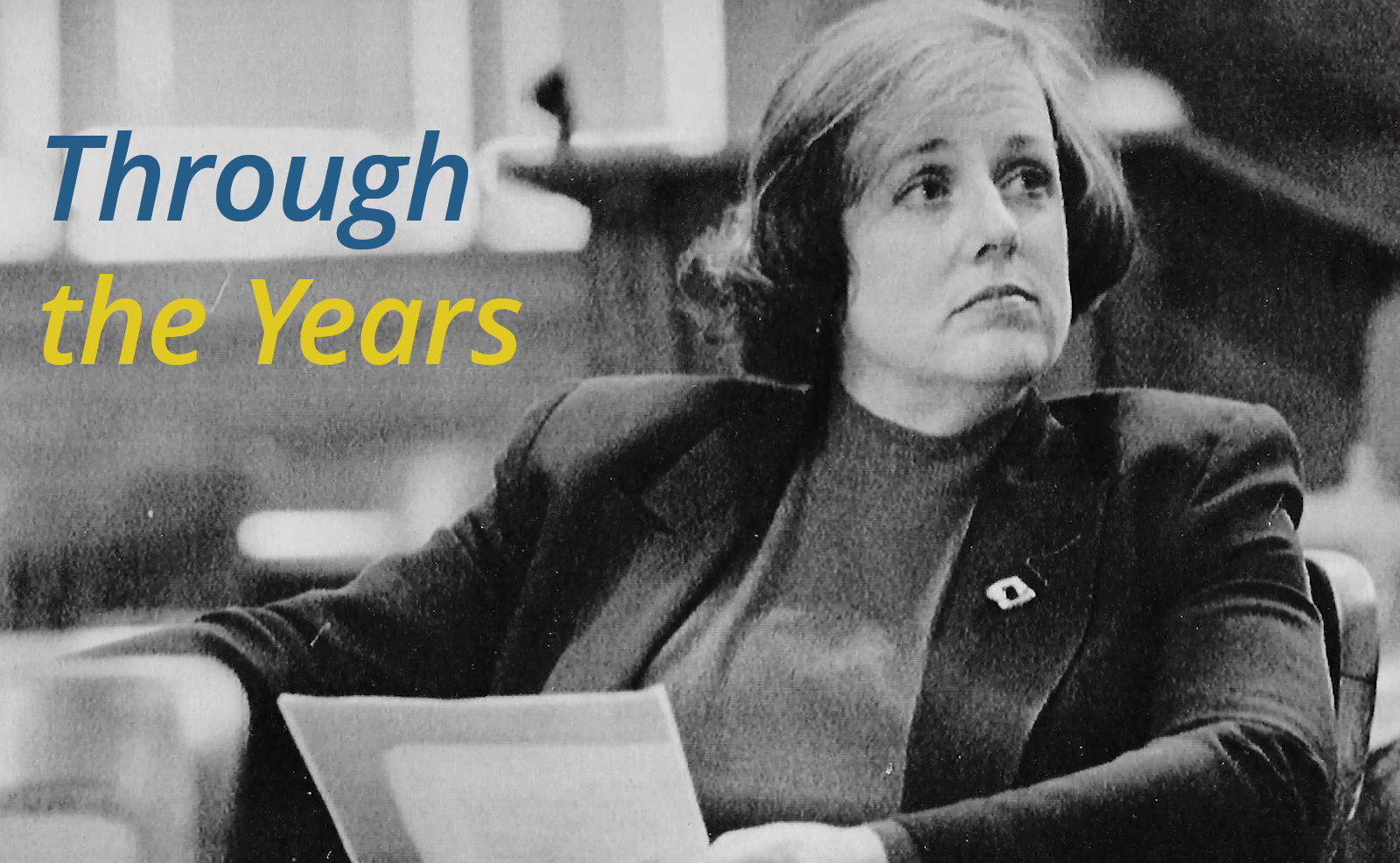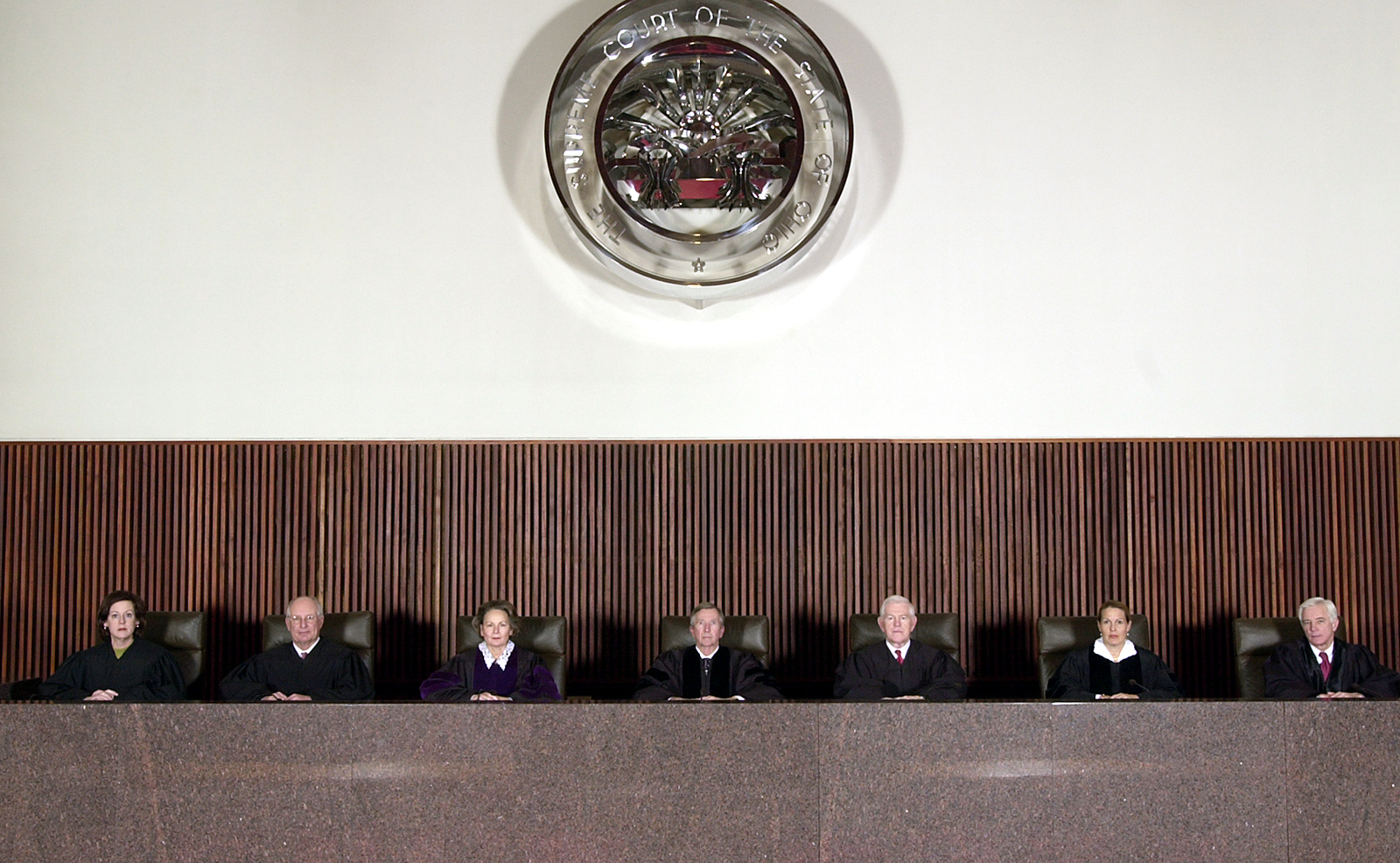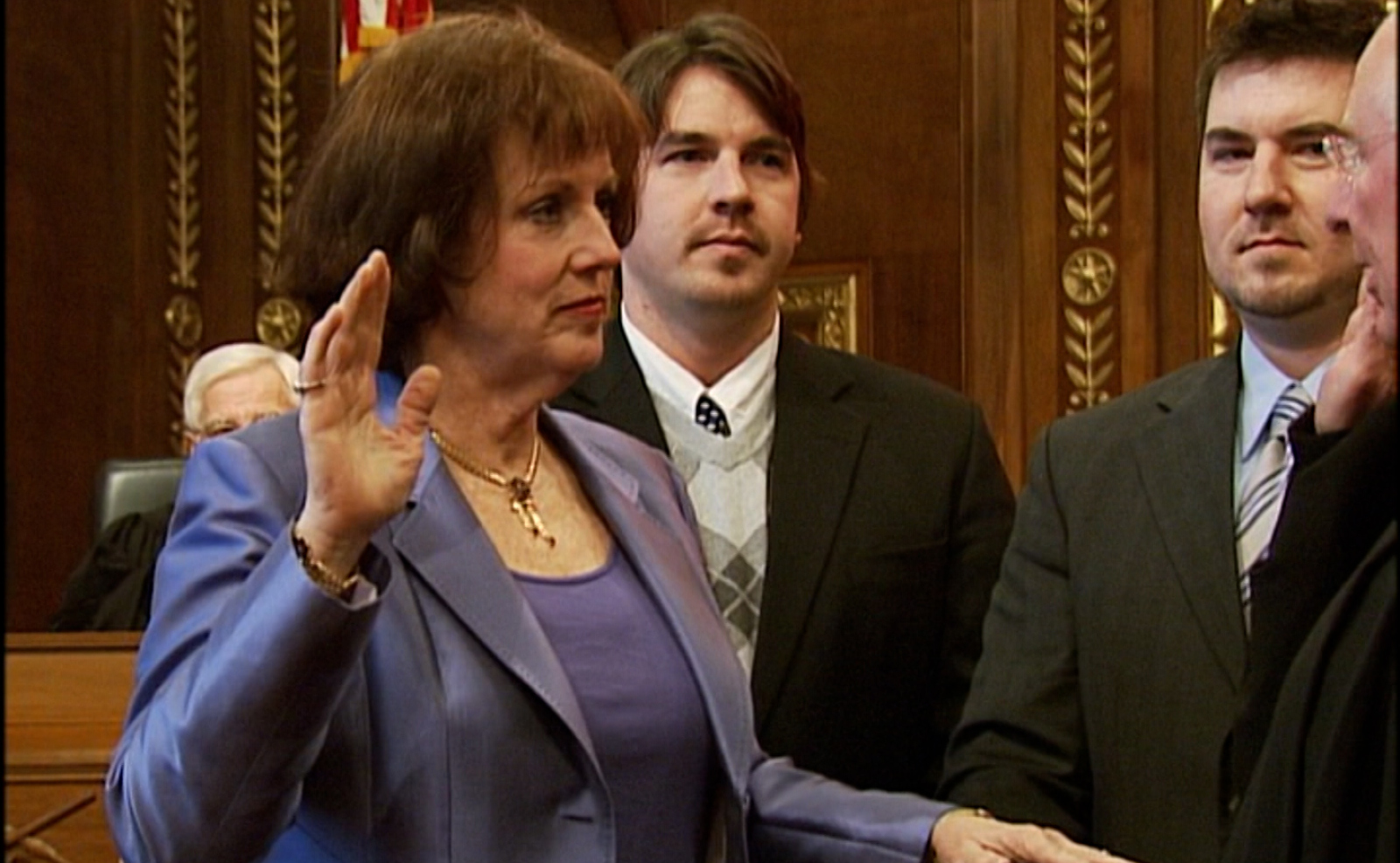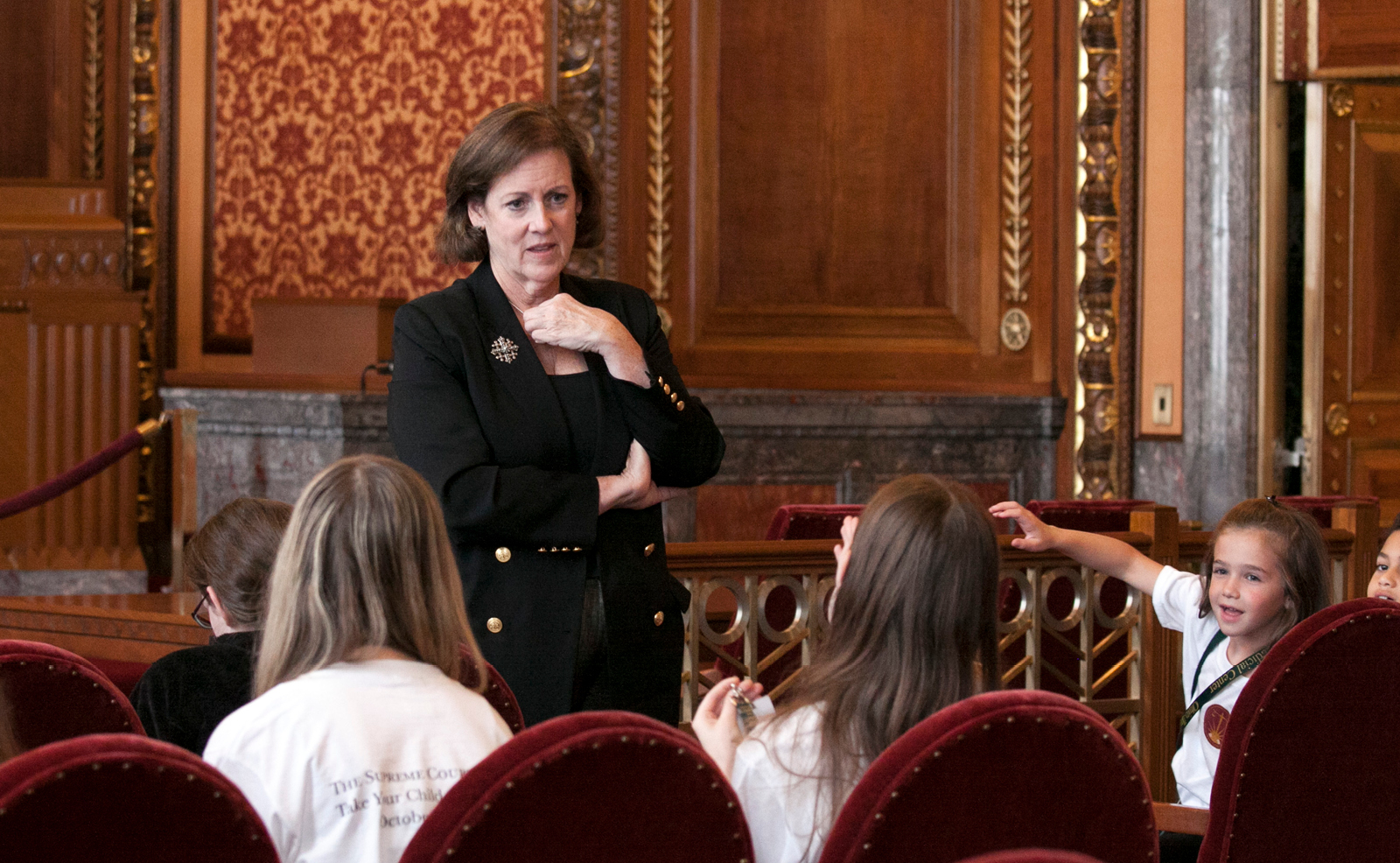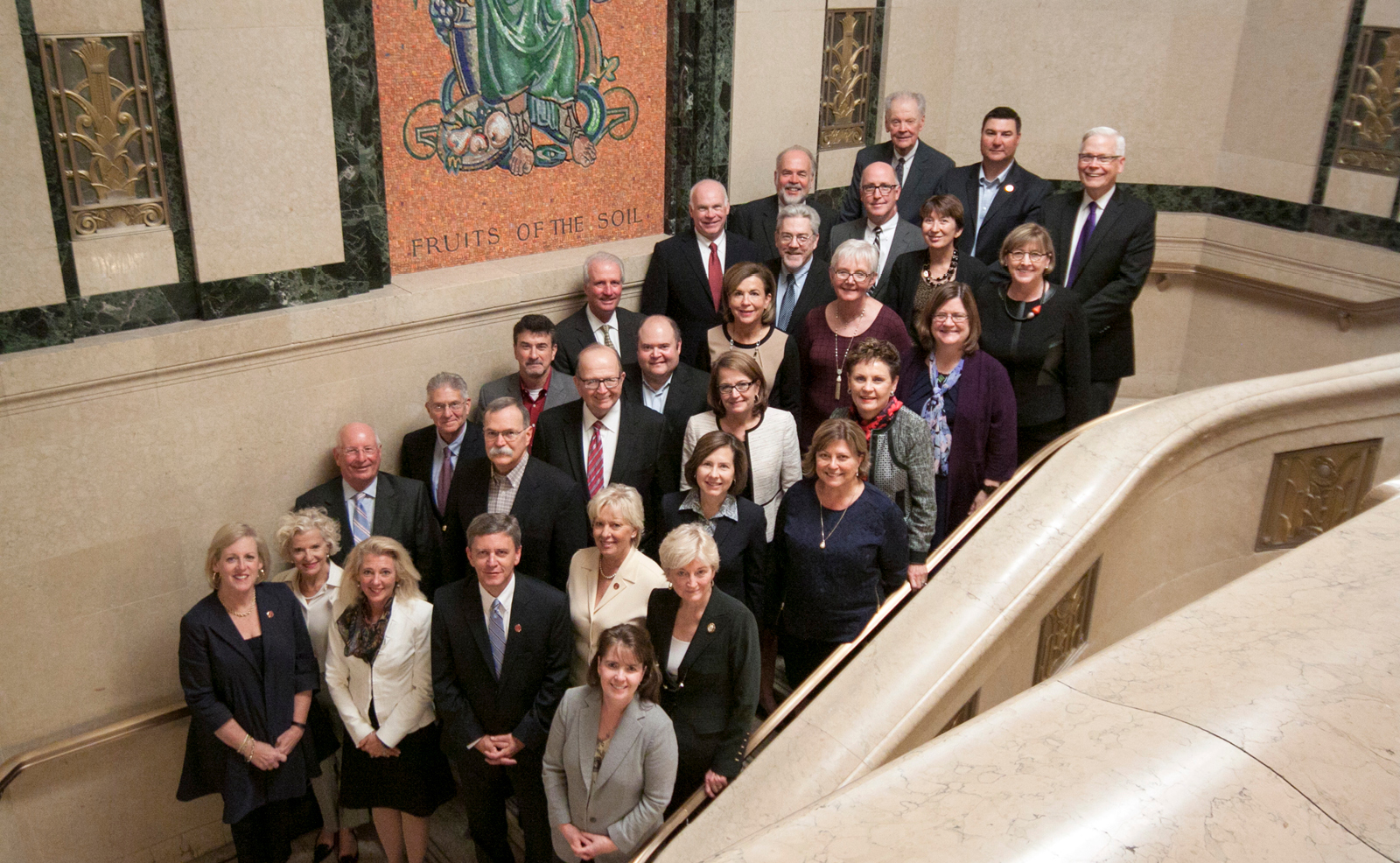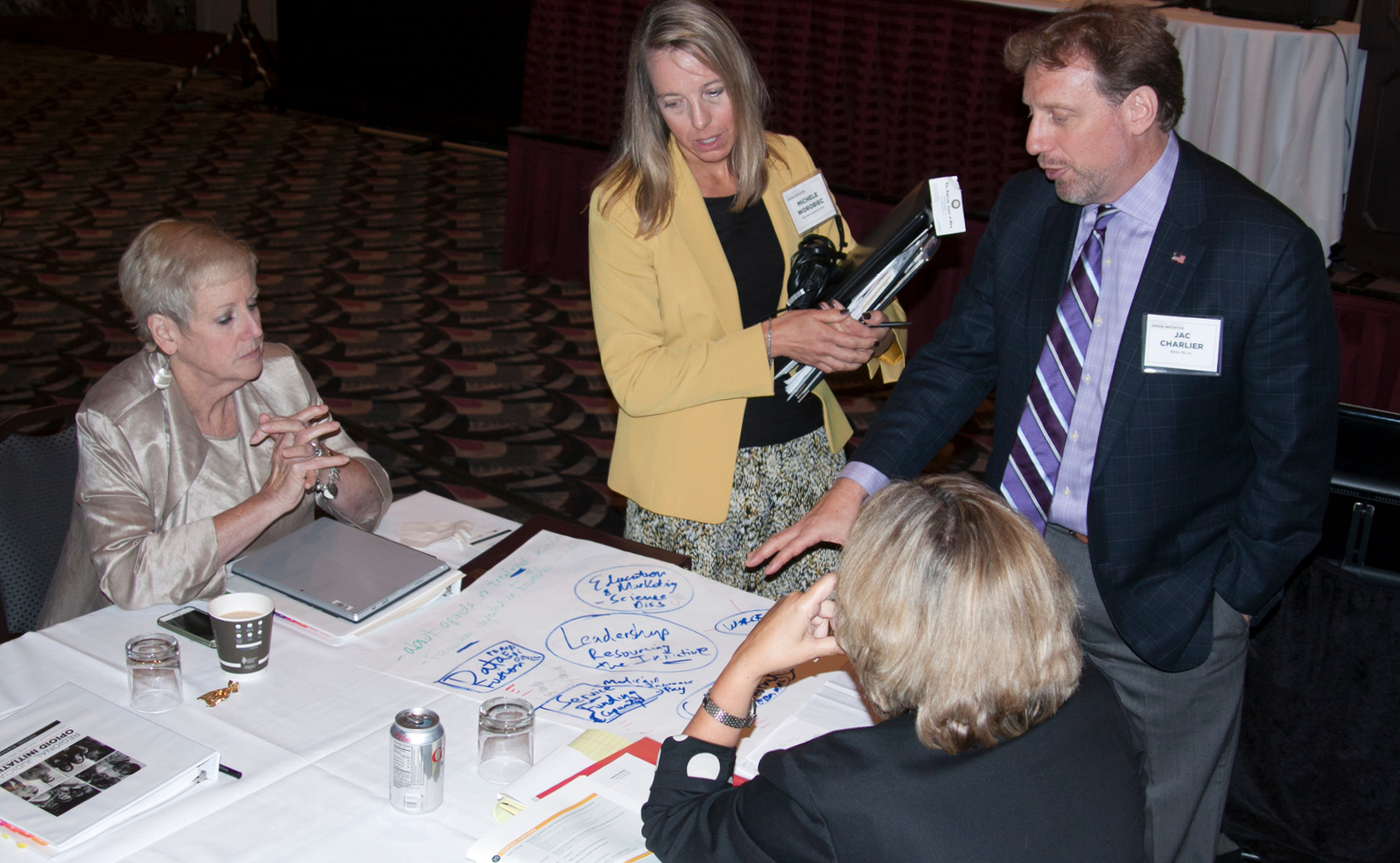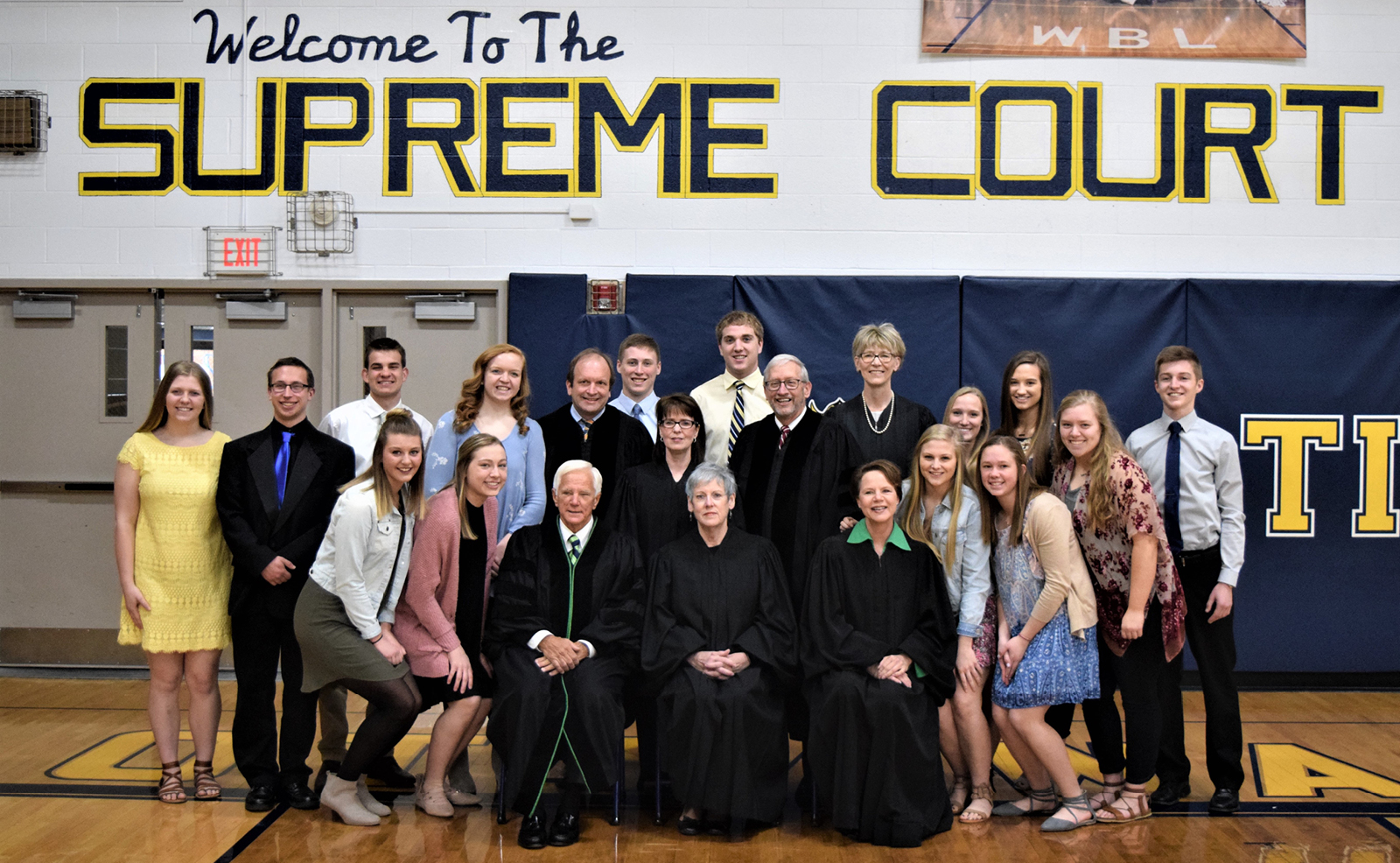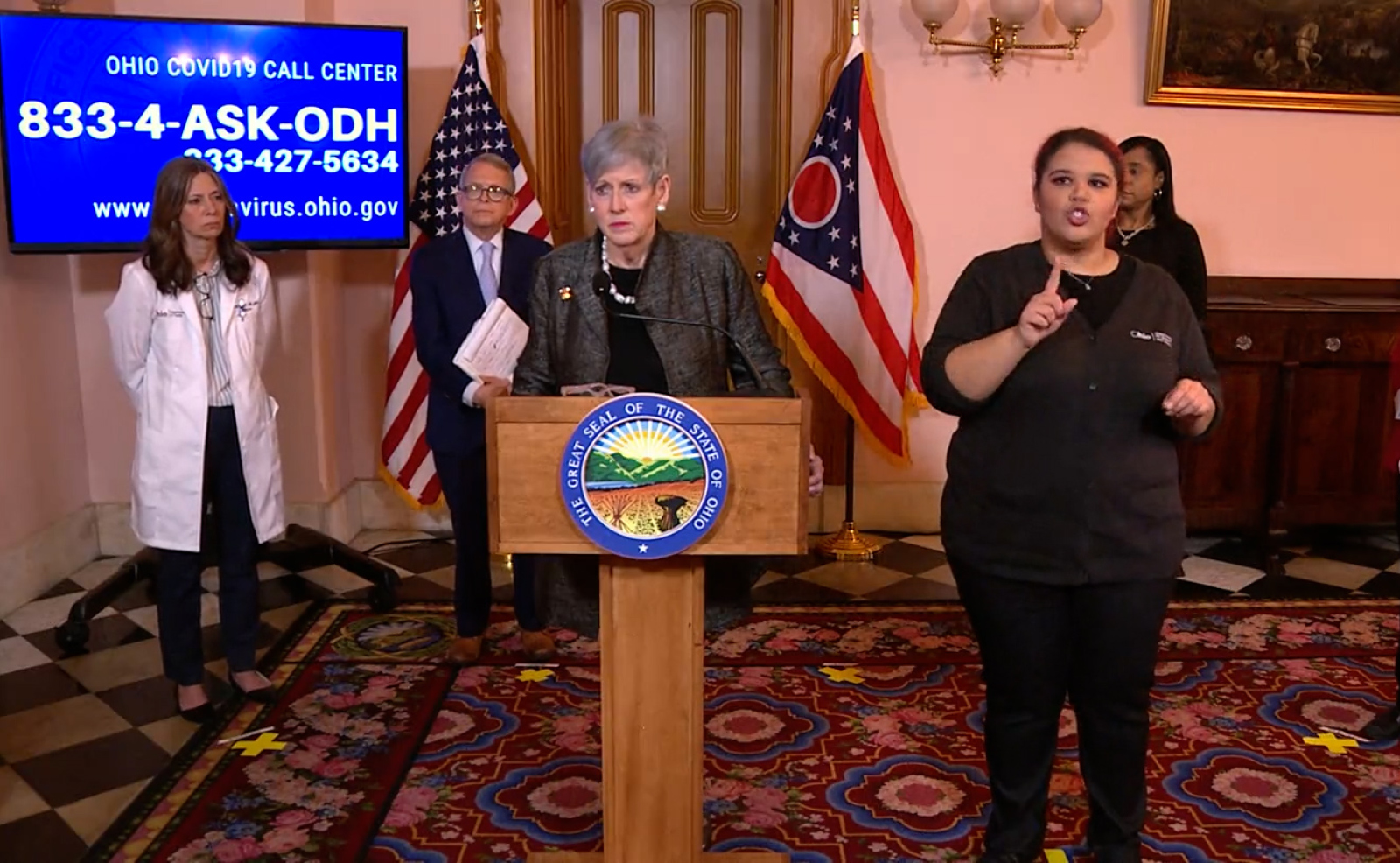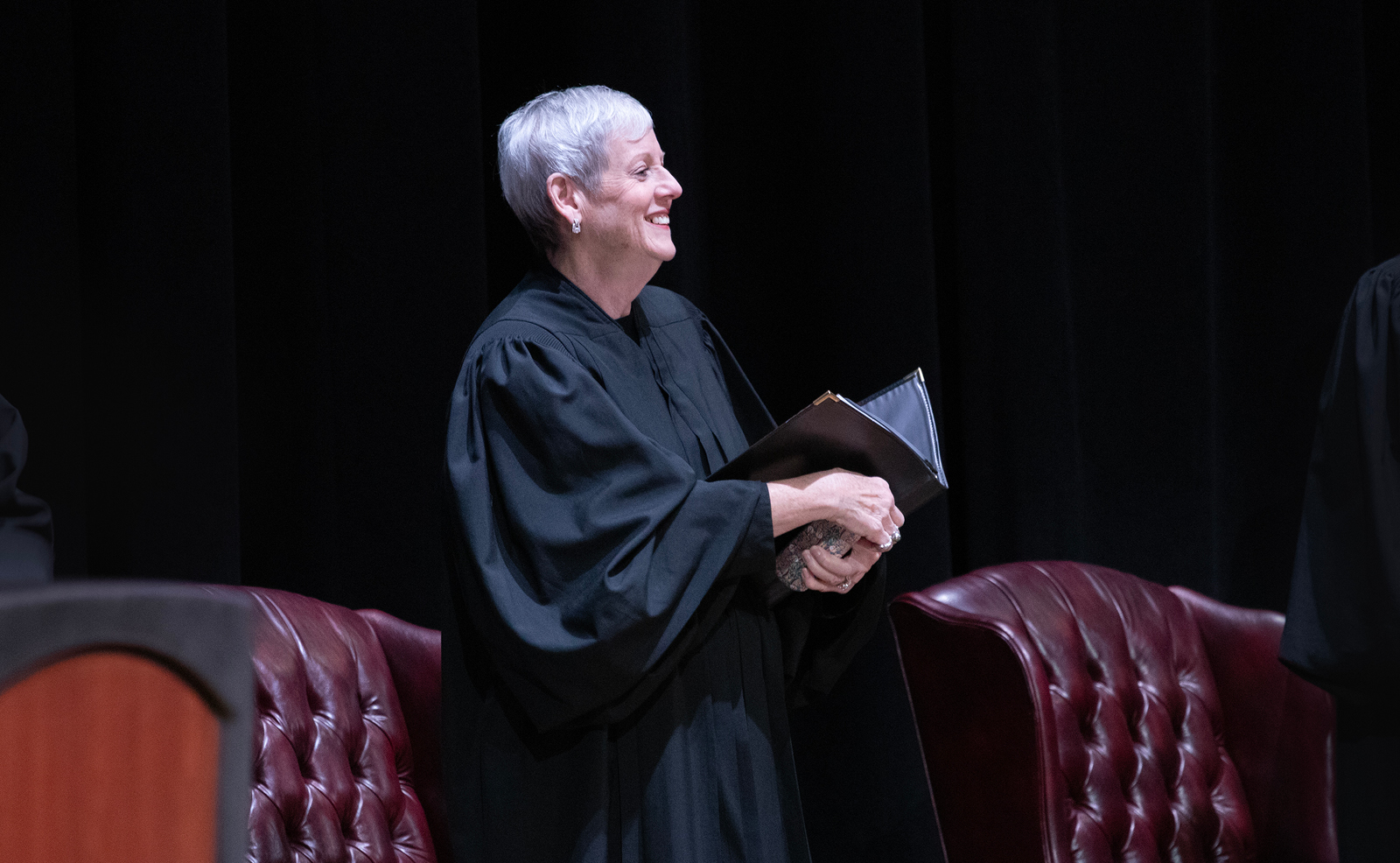Decades of Service
Chief Justice Maureen O’Connor’s departure from the Supreme Court of Ohio at the end of this month comes after 12 years as the elected chief justice, with 20 years of service to the Court. It’s a tenure stacked with admirable accomplishments and leadership likely to endure.

Chief Justice Maureen O’Connor has duties at the Supreme Court of Ohio that are familiar because of their visibility. Most notably, she directs the Supreme Court’s oral arguments – announcing each case, alerting attorneys to their time, and moving through the day’s schedule.
But there’s a lesser-known responsibility that she holds for the Supreme Court and the judicial branch. One that hasn’t been a significant part of the news articles about her in recent weeks. It’s assigned to the chief justice by the Ohio Constitution – exercising the Supreme Court’s “superintendence power” over the judicial branch.
At first glance, that may seem less than attention-grabbing. But after serving eight years as a justice, Chief Justice O’Connor embraced administration and management when she was elected in 2010 to lead the Court. She was particularly well suited for the role, given her career stops as lieutenant governor, head of the Department of Public Safety, administrative judge for the Summit County Common Pleas Court, and Summit County prosecuting attorney.
Chief Justice O’Connor’s considerable attention to this part of her duties – including bringing people together to tackle some of the toughest problems that the judicial branch has faced – will likely resonate for its positive impact on courts for years to come.
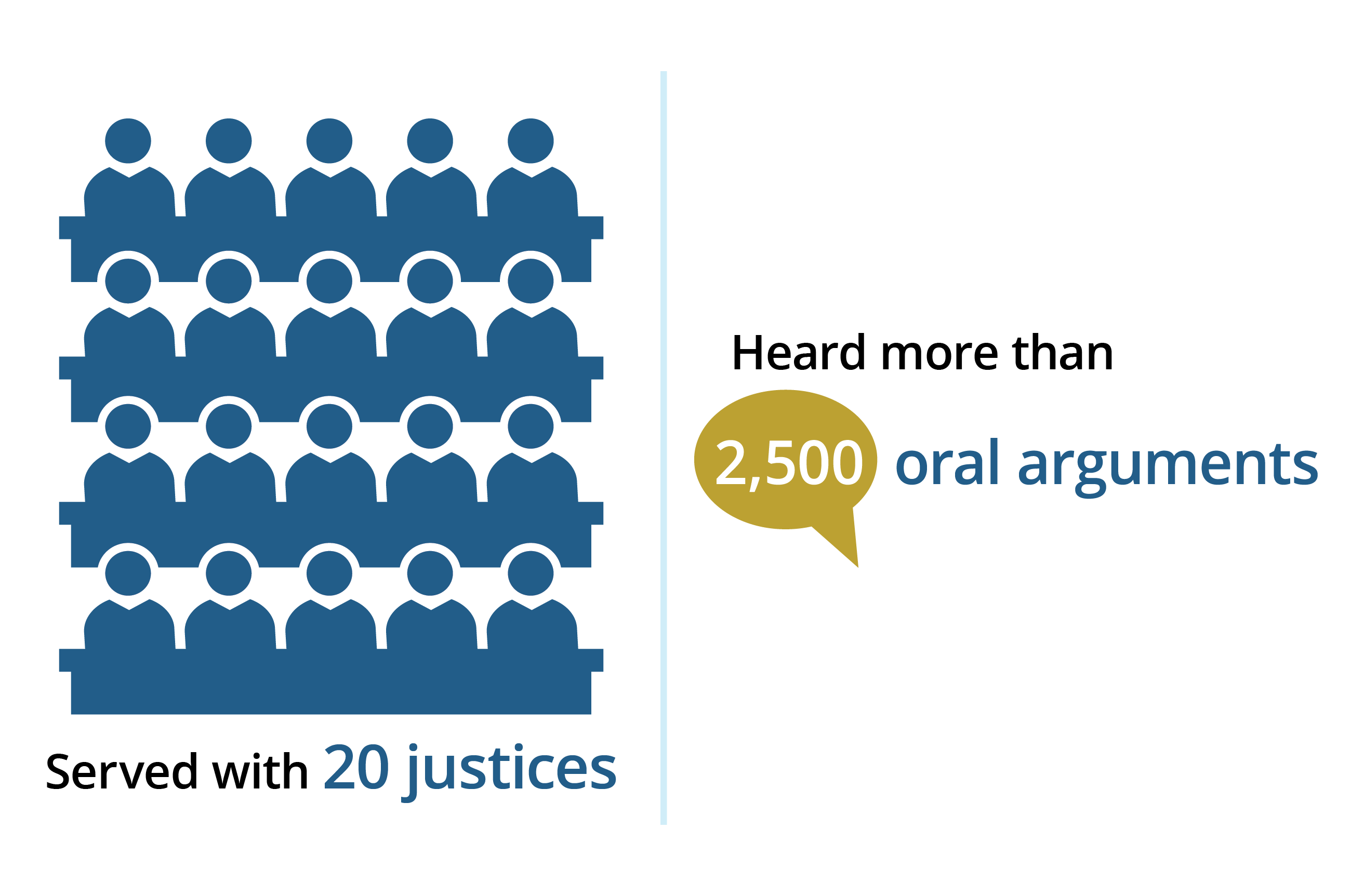
Chief Justice O’Connor has served on the Supreme Court for 20 years – hearing thousands of oral arguments with many different justices on complex legal disputes.
She Pushed the Judicial Branch to Update
Among Chief Justice O’Connor’s many endeavors on the administrative side, none may be more lasting than her leadership in modernizing Ohio courts.
Much of her support to move the judicial branch forward was supplied via Supreme Court grants to local courts each year. The grants she established enabled courts to upgrade outdated technology and to explore new ways of providing services to the public. Basics included installing cameras, microphones, video conferencing tools, and needed software and hardware – pieces that empowered courts to hold proceedings online, build online dockets, allow for e-payments, expand options for interpreters, text-message reminders to litigants about crucial court dates, and more.
Since 2015, when the grant program started, Chief Justice O’Connor has awarded nearly $40 million for local court technology initiatives.
Also on her watch:
- The Supreme Court began accepting the electronic filing of case documents in 2015.
- Improvements to the Ohio Courts Network to allow courts and justice system partners to share and search millions of case, law enforcement, state agency, and prison records.
- Streamlining the process for reporting court caseload statistics to the Supreme Court with online submissions.
- Creation of an online forum for court IT leaders to communicate easily on tech issues.
The need for modern technology in the judicial branch was perhaps never demonstrated more than when the COVID-19 pandemic arrived. Chief Justice O’Connor took steps to keep courts operating and to encourage more advances, and she distributed more grants to assist.
Then, thinking toward an ever-unpredictable future, Chief Justice O’Connor advocated for planning. She announced a task force to study how courts relied on technology during the pandemic, to identify the best practices for courts to keep post-pandemic, and decide how to continue using technology to improve the public’s access to the justice system. The Improving Court Operations Using Remote Technology (iCOURT) Task Force report offered 97 recommendations as a map for the future.
She Relied on the ‘Wisdom of Crowds’ for Problem-Solving
The iCOURT Task Force illustrates Chief Justice O’Connor’s practice over her tenure of gathering smart people to advance justice. Task forces she formed confronted the toughest problems facing courts and the legal profession.
“You bring everybody to the table, often people who normally wouldn't sit down and talk to one another. And they discuss what the issues are, what needs to be solved, and try to identify ways to resolve those issues and make recommendations,” Chief Justice O’Connor says.
The consensus frequently found in those task forces led to new or updated rules for courts, as well as ideas the legislature could consider modifying state laws.
Chief Justice O’Connor announced in her first year as chief justice a task force to review how Ohio administered the death penalty so that it was conducted “in the most fair, efficient and judicious manner possible.” The group made more than 50 recommendations to improve the state’s system.
She also has convened task forces to improve the grand jury system, to overcome barriers to accessing the courts in civil cases, to ensure the integrity of criminal convictions, to reform inequities in the bail system, to develop commercial dockets, to examine the structure and funding of the courts, and to update the state bar exam.
“I enjoy the public policy decisions that come out of those task forces that benefit not only the courts, but the citizens of Ohio, and that encourage good government,” she notes.
These efforts to improve courts and justice didn’t stop at the state’s borders. She was co-chair of the National Task Force on Fines, Fees, and Bail Practices, and served as president of the national Conference of Chief Justices.
As OSBA President Robin Weaver stated when Chief Justice O’Connor was honored with the Thomas J. Moyer Award for Judicial Excellence in 2018:
“All Ohioans can be proud of her leadership on the state, national, and international stage, where she has used her considerable and growing influence to champion judicial reform, judicial independence, and judicial accountability.”
She Reinforced the Impartiality of Judiciary
Of course, a justice’s central responsibility is to weigh in on the toughest questions of law in Ohio. When it comes to being a jurist, Chief Justice O’Connor is clear that she is one of seven independent legal minds.
“I’m no different than any other justice when it comes to votes,” the chief justice notes. “My vote doesn’t weigh any more as chief justice.”
Even so, after nearly 20 years on the Supreme Court, Chief Justice O’Connor has written 296 of the Court’s majority opinions to date and 77 dissents, among a number of concurrences and partially concurring/partially dissenting opinions. With that depth of experience, she has valuable insights on judges and courts.
Her convictions about the judicial branch compelled her to protest accusations of partisan special interests in Ohio’s courthouses and speak out on the importance of fairness and impartiality in the courts. She holds firm to the role judges are to play.
“Not all people understand the fact that a judge must make decisions according to the law and the constitution. I have responded to those who want my Republican registration to play a role that, ‘I don’t want to be voting like a Republican. I don’t want to be voting like a Democrat.’ A judge’s political party has no place in the decision making. Just as religion or other affiliations have no place,” she explains.
And that’s her argument in a string of redistricting cases the Court had to decide this year. She was part of the majority who ruled that the districts drawn in five Ohio House and Senate maps and two maps for U.S. Congress were unconstitutional.
The wisdom arising from weathering criticism thrown her way or taking a dissenting view in a case has given Chief Justice O’Connor a thoughtful perspective on the work of the Court, echoing back to her understanding of each justice’s independence.
Her Legal Writings in Juvenile Law Are Influential
Opinions written by Chief Justice O’Connor are expected to have lasting influence in several areas of law. Juvenile justice is one.

Of the hundreds of legal decisions Chief Justice O’Connor has penned, she highlights rulings on juvenile rights and eminent domain. (Graphic based on opinions written as of Dec. 20, 2022.)
Her opinion in In re C.S., which she wrote early on as a justice, was described in the Akron Law Review as “ma[king] a difference in the lives of juveniles.” The case involved the constitutional rights of children, specifically the right to an attorney and what was a proper waiver. The article, written by former Justice Yvette McGee Brown and Kimberly Jolson, now a federal magistrate, states that then Justice O’Connor’s decision laid out a constructive way to analyze juvenile cases. It balanced the objectives of rehabilitating youths and protecting society with the need for adequate sentencing of violent juvenile offenders.
“Her framework, grounded in the Constitution and the purpose of the juvenile system, ensures juveniles receive consistent and well-reasoned treatment from Ohio courts while, at the same time, effectuating the Ohio General Assembly’s policy choices,” the authors wrote.
When asked about cases that weigh the most on her, Chief Justice O’Connor points to these cases involving children.
“I hate to see it when juveniles are deprived of what I consider fundamental fairness,” she states. “There are cases we’ve decided that have been the right application of the law, and the right application of constitutional considerations, that expanded fairness for the juveniles.”
Attorneys who have worked for her marvel at her considered and thorough approach to the law.
“I am forever amazed by her remarkable ability to readily recall countless cases and legal principles and to always ask insightful questions,” says Amy Ervin, who has worked with the chief justice since 2009.
“The chief has an incredible ability to ask the critical questions that get to the underpinnings of an argument or position,” adds Pierce Reed, a senior attorney in Chief Justice O’Connor’s chambers from 2005 to 2017. “She wants to be sure she understands every strength and every weakness so that she can reach the best result or answer.”
She Wrote on State Constitution’s Independent Force
Legal analyses rely on legal principles and precedent. But in Chief Justice O’Connor’s view, a judicial philosophy doesn’t mean that precedent locks judges into the 19th century. Earlier cases can guide courts on how to sort out contemporary issues, like advances in technology, that the Founding Fathers couldn’t have envisioned in their time, she says.
She points to State v. Smith, a Supreme Court of Ohio decision that addressed whether law enforcement needs a warrant to search a cellphone. The decision, written by then Justice Judith Ann Lanzinger, was cited by the U.S. Supreme Court in a later ruling on the issue.
“It takes a lot of research and a lot of thought. That’s what you do as a judge,” Chief Justice O’Connor explains. “If you wanted to say there’s absolutely no precedent here, well, yes, there is. Because you’re looking at the right to privacy. What is the nature of the cell phone? It might be akin to a wallet because it carries everything you might carry in your wallet. So you would apply the same privacy considerations.”
The chief also recalls City of Norwood v. Horney, an eminent domain opinion she wrote. It was the first ruling from a state high court after the U.S. Supreme Court released Kelo v. City of New London in 2005. Kelo concluded that the U.S. Constitution didn’t bar the use of eminent domain to seize private property for a community’s economic benefit.
However, the Supreme Court of Ohio in Norwood determined that this state’s constitution does prevent a municipality from taking private property for a private developer’s economic or financial gain alone. The case is cited for establishing the independent force of the Ohio Constitution and for emphasizing the separation of powers between government branches – with the Court holding supreme responsibility for interpreting the state constitution.
“It preserved property rights in the state of Ohio,” Chief Justice O’Connor says. “There are other states that have followed what Ohio did, and it’s a case that’s in both property law and constitutional law books.”
She’s especially proud of the Court’s unanimity in the ruling.
“It was a 7-0 decision. I got all my colleagues to join me in my opinion. Without having any concurring opinions,” she notes.
These are the kinds of cases that offered valuable training to lawyers who passed through her chambers.
“Chief Justice O’Connor elevated my effectiveness as a lawyer,” notes Lindsay Ford Ellis, who worked for the chief justice from 2011 to 2013. “She guided me not only through her instruction but, more importantly, by setting an example to value disciplined analysis, intellectual honesty, and objectivity.”
Sarah Stafford, judicial attorney to the chief for more than eight years, agrees.
“There is no question too silly, no detail too minor, and no conversation that can’t be had,” Stafford says.
She Strived to Move Judiciary Forward
Back in the administrative realm, the lengthy list of initiatives Chief Justice O’Connor embarked on during her tenure goes on. A few other notable moments:
She convened the eight-state Regional Judicial Opioid Initiative in 2016 to leverage the often disconnected resources of state judicial, criminal justice, and treatment systems against the escalating opioid epidemic, which ignored state lines. The initiative became a model for other states.
Chief Justice O’Connor supported and pushed toward implementing the goals of the 1999 Commission on Racial Fairness, set in motion by the Supreme Court and the Ohio State Bar Association. In an Independence Day statement after George Floyd’s murder in Minneapolis by a police officer in 2020, she wrote on the historic inequities endured by people of color in the country and appealed for the judicial branch to do better: “The law recognizes the importance of equal justice. But it is up to our court systems, the judges, and the lawyers to ensure that the constitutional guarantees are applied equally.”
The commission’s report emphasized collecting data, to bolster fairness and transparency. The chief justice has stressed the need for comprehensive, data-driven information about sentencing and supported advances along the way – development of a uniform form for courts to use to track sentencing data; launch of the Ohio Sentencing Data Platform to aid Ohio courts in reporting criminal sentencing information; and a partnership with the University of Cincinnati to build the technological infrastructure for a statewide database.
Throughout 12 years as chief justice, she has demonstrated a commitment to specialized dockets. The Supreme Court began a certification process in 2013 to assist local courts with programs for specific populations, such as veterans, victims of human trafficking, and individuals struggling with substance use disorders, giving many a second chance.
Also memorable are Chief Justice O’Connor’s advocacy for diversity in the legal profession and on the bench, cameras in courtrooms to promote transparency, and many, many civic education programs – including education efforts at the Thomas J. Moyer Ohio Judicial Center, transportation grants for students to visit the Court, outreach activities such as holding oral arguments at high schools, to name a few.
She Values Service Above All
A look at Chief Justice O’Connor’s resume reveals her deliberate choices to pursue a career in public service. Yet those job titles only hint at the long list of contributions to the government entities she has served, including the courts.
“The phrase ‘public service’ in the context of Chief Justice O’Connor is more accurately understood as a verb, not a noun,” Stafford explains.
Reed adds, “For all of her power, the chief remains steadfast in her belief that she is a public servant. She works hard out of a sense of duty, not a sense of obligation.”
If you ask Chief Justice O’Connor, though, she will quickly credit the individuals on the Court staff and across the judiciary, along with its many partners in the justice system, as instrumental in the success of her myriad initiatives and legal opinions.
“My approach for making decisions and running organizations is to hire smart people,” she says. “You let them do their job, and you trust their advice.”
Chief Justice O’Connor believes her efforts leave the judiciary in better shape than when she began. As her mother and grandmother taught her, it’s each person’s responsibility to make things better. In that spirit, she hopes that judges across the state will find time to engage with the people of Ohio. It benefits the judiciary and the justice system.
“I encourage the judiciary to get out into the public and talk to people about what you do,” she says. “Go to schools. Go to civics organizations, go on the radio, on TV. Explain what you do as a judge. Why is it important? Humanize the judiciary so that people think about the public service we do.”
It is a foundation that Chief Justice O’Connor undoubtedly has added to during her time in the judiciary, and one that courts can build on for the future.
CREDITS:

